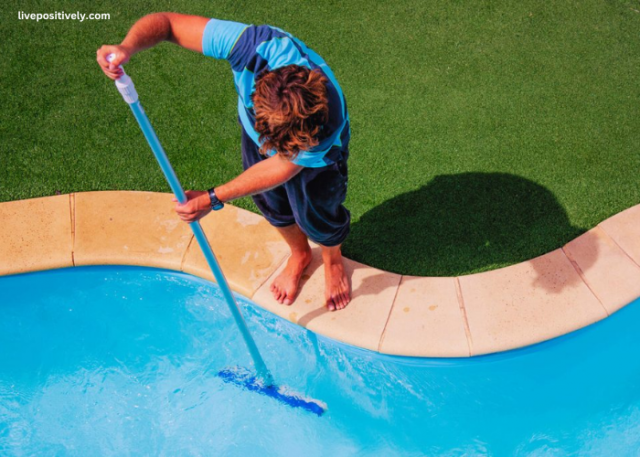A sparkling, clear pool is the hallmark of a well-maintained backyard, but algae growth can quickly turn that inviting water into a murky mess. Whether you're a new pool owner or a seasoned expert, keeping algae at bay requires consistent care and proper water treatment. For high-quality maintenance products, pools supply Canada offers everything you need to keep your pool pristine. In this guide, we'll explore effective strategies to prevent algae growth and ensure your pool stays clean all season long.
What Causes Algae Growth in Pools?
Algae are microscopic organisms that thrive in warm, moist environments, making swimming pools an ideal habitat. Factors contributing to algae growth include poor water circulation, unbalanced chemicals, and debris buildup. Sunlight accelerates algae growth, especially when chlorine levels drop, allowing spores to spread rapidly.
Even trace amounts of algae can quickly multiply, leading to green, yellow, or even black discoloration in your pool. Understanding the causes can help you prevent algae before it becomes a bigger problem.
How to Maintain Proper Pool Chemistry
Balancing your pool's water chemistry is the first line of defense against algae. Proper pH, chlorine, and alkalinity levels create an environment where algae struggle to survive. Test your water regularly to ensure these levels remain optimal:
- pH Levels: Maintain a pH range of 7.2 to 7.6 to prevent water from becoming too acidic or too basic, which can affect chlorine effectiveness.
- Chlorine Levels: Keep free chlorine between 1-3 ppm (parts per million). Chlorine is the primary sanitizer that kills algae and bacteria.
- Alkalinity: Ensure total alkalinity stays between 80-120 ppm, stabilizing pH and supporting chlorine efficiency.
- Shock Treatments: Use pool shock treatments weekly or after heavy use to oxidize contaminants and kill any early-stage algae spores.
The Importance of Pool Filtration and Circulation
Circulation is vital for distributing chemicals evenly and preventing algae from settling in stagnant areas. Run your pool's filtration system for at least 8-12 hours per day, especially during warmer months when algae growth is more likely.
Regularly clean your filter to remove debris and buildup that may reduce its efficiency. Backwash sand and DE filters, clean cartridge filters, and inspect pump baskets to ensure proper water flow.
Cleaning and Brushing to Prevent Algae
Routine cleaning is another essential step in algae prevention. Use a pool brush to scrub walls, steps, and corners where algae can cling and hide. Vacuum the pool floor to remove dirt and debris, and skim the water surface daily to clear leaves and insects.
For persistent areas prone to algae growth, use a pool-safe algaecide as a preventative measure. These products target spores and help prevent them from attaching to pool surfaces.
Why Pool Covers Matter
While pool covers are commonly used for heat retention and debris prevention, they also play a role in algae control. Covers block sunlight, which algae need to thrive. By limiting light exposure, you reduce the chance of algae blooms during periods when the pool isn't in use.
If you use a cover, be sure to clean and dry it regularly to prevent mold and mildew buildup, which can transfer contaminants into the water.
The Role of Pool Algaecides
Algaecides act as a backup defense against algae, especially during peak swimming seasons. They come in different formulations for green, yellow, and black algae. Apply algaecides according to manufacturer instructions, particularly after heavy rainfall or high temperatures that can deplete chlorine levels.
While algaecides are effective, they should complement rather than replace proper cleaning, filtration, and chemical balancing practices.
Seasonal Maintenance Tips
Each season brings unique challenges for pool maintenance. Here are a few tips to prevent algae growth year-round:
- Spring Opening: Test and balance water chemistry as you reopen the pool. Shock the water and clean all filters and equipment before use.
- Summer Care: Maintain consistent chlorine levels and increase cleaning frequency during peak usage. Test water after pool parties and rainstorms.
- Fall Closing: Clean and balance the pool before closing it for winter. Add a winterizing algaecide to prevent spores from developing during the off-season.
- Winter Maintenance: Periodically check water levels, cover integrity, and chemical balance, especially in milder climates where algae may still develop.
What to Do If Algae Develops
If you spot algae in your pool, act quickly to prevent further growth. Start by brushing the affected areas and vacuuming debris. Shock the pool with a high dose of chlorine and run the filtration system continuously until the water clears.
Use algaecide treatments if necessary, and retest chemical levels to ensure proper balance moving forward. Persistent algae may require professional assistance to fully resolve.
Conclusion: Keep Your Pool Algae-Free
Preventing algae growth in your pool requires regular maintenance, proper chemical balance, and effective filtration. By following these tips, you can ensure your pool remains clean, clear, and ready for enjoyment throughout the swimming season.
For high-quality cleaning tools, algaecides, and testing kits, check out pools supply Canada. With the right products and consistent care, you can enjoy an algae-free pool all year long.






